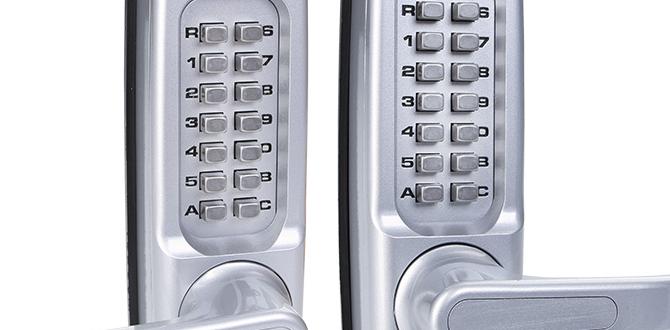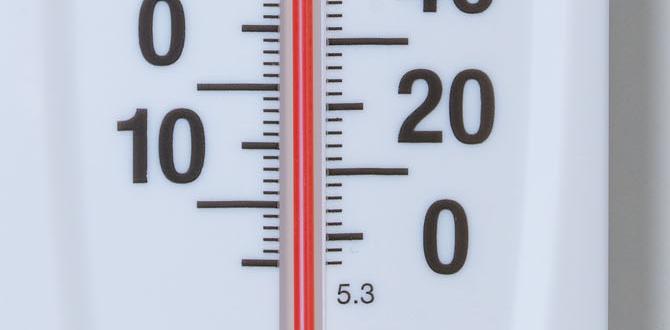Have you ever wanted to grow your own food without digging up your yard? Many people dream of having a garden but find traditional methods too hard or messy. Luckily, no dig gardening offers a simple and fun way to start gardening without all the hassle.
No dig gardening is a method that lets you build your garden on top of the ground. You don’t need to break any soil or bury weeds. Instead, you pile up layers of materials like cardboard, straw, or compost. This creates a rich, healthy place for plants to grow. It’s like creating a cozy blanket for your seeds!
Did you know that this method can save time and energy? Plus, it helps keep the earth healthy. Many beginners find no dig gardening easier. You can grow vegetables, flowers, or herbs right at home!
If you’re curious about how to start, you’re in the right place. Let’s dive into the world of no dig gardening for beginners and discover how easy it can be to grow your fresh food!
No Dig Gardening For Beginners: A Simple Guide To Success
No Dig Gardening for Beginners
No dig gardening is an easy way for beginners to start growing plants. It saves time and effort by skipping the need for tilling. Instead, gardeners layer materials like cardboard and compost directly on the soil. This helps improve soil health and keeps plants thriving. Imagine planting without all that heavy digging! Plus, you can use kitchen scraps, making it eco-friendly. If you want a simple, fun way to garden, no dig gardening might be perfect for you!What is No Dig Gardening?
Definition and basic principles of no dig gardening. Comparison with traditional gardening methods.No dig gardening means growing plants without turning the soil. It’s like making a tasty sandwich without the messy bread crumbs everywhere! This method keeps the soil healthy by letting worms and bugs do their job naturally. Unlike traditional gardening, where you dig deep and disturb the earth, no dig gardening preserves the soil layers. Think of it like a cozy blanket for the creatures living underground, allowing them to play without getting interrupted!
| Aspect | No Dig Gardening | Traditional Gardening |
|---|---|---|
| Soil Disturbance | Minimal | High |
| Soil Health | Improved | Can Degrade |
| Time Required | Less | More |
Benefits of No Dig Gardening
Reduced soil disturbance and its impact on soil health. Time and labor savings for gardeners.
No dig gardening is like giving your soil a cozy blanket instead of disturbing it. This method keeps healthy critters in the dirt happy, which means better soil health. Less digging means less time and labor for hardworking gardeners. Who wouldn’t want more time to sip lemonade while admiring their garden? It’s estimated that you can save up to 30% of your gardening time. So, say goodbye to sore backs and hello to relaxed planting!
| Benefits | Description |
|---|---|
| Soil Health | Minimal disturbance keeps beneficial organisms thriving. |
| Time Saving | Less digging equals more time for rest. |
Getting Started with No Dig Gardening
Essential materials needed for setting up. Planning your garden layout and design.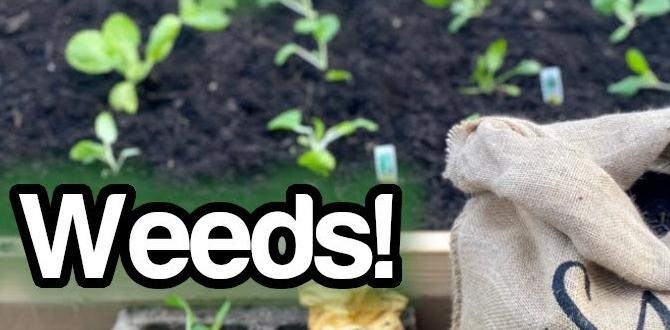
Starting your no dig garden can be simple and fun! First, gather some essential materials like compost, cardboard, and mulch. Cardboard is like a magic blanket for weeds. Then, sketch out your garden layout. Think about which plants go where. Some plants are friends and grow better together, while others are like that one kid on the playground no one wants to share with. Here’s a handy table to help you plan:
| Plant Type | Best Friends | Loners |
|---|---|---|
| Tomatoes | Basil, Marigolds | Corn |
| Cucumbers | Beans, Radishes | Potatoes |
| Carrots | Onions | Celery |
With these materials and a plan, you’ll be ready to dig in—without actually digging! Remember, a great garden is about having fun and enjoying the process. Happy planting!
Layering Techniques for No Dig Gardening
Explanation of layering using organic materials. Tips for creating optimal layers for soil health.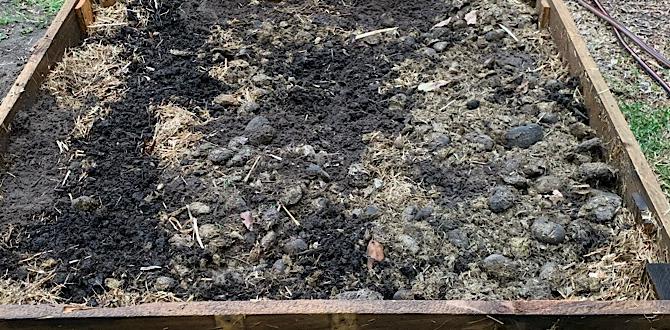
Layering in no dig gardening is like making a delicious sandwich! You use organic materials, placing them one on top of the other. Start with cardboard or newspaper on the ground. Next, add leaves, grass clippings, and kitchen scraps. This mixture creates rich, healthy soil.
Here are some tips for your layers:
- Bottom Layer: Thick cardboard for weed control.
- Middle Layers: Green materials like food scraps for nutrients.
- Top Layer: Brown materials like dried leaves for balance.
These layers build healthy soil and help plants grow strong. Remember, it’s all about balance!
What materials should I use for layering?
You should use a mix of greens (like kitchen scraps) and browns (like dry leaves) for effective layering.Fun Fact: Did you know that worms love the layers you create? They can help make your soil even better! Happy gardening!
Choosing the Right Plants for Your No Dig Garden
Best plants suited for no dig gardening. Understanding plant compatibility and seasonal considerations.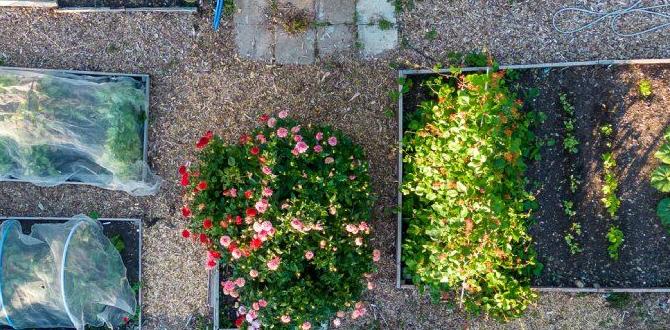
Starting a no dig garden? Great choice! First, pick plants that grow well together, like tomatoes and basil, or carrots and radishes. These buddies will help each other thrive! You should also think about the seasons. For instance, leafy greens do well in cool weather, while peppers love the heat. Want to know a secret? Planting flowers can attract bees, making your garden bloom like a party! Here’s a handy table to help you choose.
| Best Plants | Season | Compatibility |
|---|---|---|
| Tomatoes | Summer | Good with Basil |
| Carrots | Spring/Fall | Good with Radishes |
| Lettuce | Spring/Fall | Good with Spinach |
| Peppers | Summer | Good with Onions |
Maintaining Your No Dig Garden
Routine maintenance tips for weed control. Watering and fertilization strategies.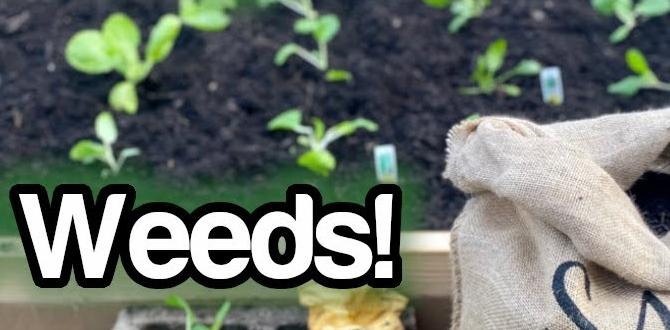
Keeping your no dig garden healthy is simple. Start with regular checks for weeds. Hand-pulling weeds is effective. You can also cover soil with mulch to stop weed growth.
Water your plants deeply but not too often. This helps roots grow strong. Also, add natural fertilizers like compost. It provides the right food for your plants.
How can I control weeds in my no dig garden?
Hand-pulling weeds and using mulch work best for weed control.
Watering and Fertilization Tips:
- Water deeply once a week.
- Add compost every few months.
Troubleshooting Common No Dig Gardening Issues
Common pests and diseases in no dig systems. Solutions for maintaining plant health.No dig gardening is great, but it can have some issues. Common pests like aphids and snails can appear, along with diseases such as powdery mildew. These can harm your plants. To keep them healthy, try these tips:
- Use natural predators like ladybugs for pests.
- Water plants in the morning to reduce moisture.
- Ensure good air circulation around your plants.
- Remove any dead leaves and debris.
With these steps, your no dig garden can thrive! Remember, a healthy garden leads to happy plants!
What are some common issues in no dig gardening?
Common issues include pests like aphids and diseases like powdery mildew.
How can I keep my plants healthy?
- Use good compost.
- Rotate crops each season.
Resources and Tools for No Dig Gardening
Recommended books and online resources for beginners. Essential gardening tools specific to no dig practices.
Getting started with no dig gardening is exciting! To make it easier, try reading some great books and checking out helpful online resources. Some excellent books, like “The No Dig Gardening Handbook,” can offer valuable tips. Don’t forget to visit websites that focus on gardening tips too!
For tools, keep it simple. You’ll need a garden fork, a compost bin, and mulch. Here’s a quick table with essential items:
| Tool | Purpose |
|---|---|
| Garden Fork | Turning materials |
| Compost Bin | Making rich soil |
| Mulch | Keeping moisture |
With the right tools and information, your no dig garden will thrive in no time. Remember, less digging means more time for enjoying those delicious veggies!
Conclusion
In conclusion, no dig gardening is an easy way for beginners to grow plants. You layer organic materials to improve soil and save time. This method helps keep weeds away and boosts healthy growth. Start your own no dig garden today! Read more about choosing materials and planting techniques to enhance your gardening journey. Happy gardening!FAQs
Sure! Here Are Five Related Questions On The Topic Of No Dig Gardening For Beginners:Sure! Here are some simple answers for beginners starting with no dig gardening. 1. **What is no dig gardening?** No dig gardening is planting without turning over the soil. You layer materials right on top. 2. **What do I need to start?** You need garden space, soil, cardboard, and compost. You can also use leaves or straw for layering. 3. **How do I make my no dig garden?** First, cover the ground with cardboard. Then, add layers of compost and your choice of materials. 4. **What can I grow in my garden?** You can grow vegetables, flowers, and herbs. Some easy ones are lettuce, tomatoes, and carrots. 5. **How often do I water my garden?** Water when the soil feels dry. In hot weather, you might need to water every day.
Sure! Please provide the question you want me to answer.
What Are The Basic Principles Of No Dig Gardening, And How Does It Differ From Traditional Gardening Methods?No dig gardening means you don’t turn the soil. Instead, you layer materials like compost and mulch on top. This helps keep good bugs and nutrients in the soil. Traditional gardening has you digging and turning the soil each time. No dig is easier and saves time!
What Materials Are Best To Use For Creating A No Dig Garden Bed, And How Should They Be Layered?To make a no-dig garden bed, you can use cardboard, straw, compost, and soil. Start by laying down a thick layer of cardboard. This helps stop weeds from growing. Next, add a layer of straw on top. Then, pile on compost and finally top with good garden soil. This creates a perfect home for your plants!
How Can Beginners Effectively Manage Weeds And Pests In A No Dig Garden?To manage weeds, you can cover the soil with cardboard or mulch. This blocks sunlight and stops weeds from growing. For pests, check your plants regularly. If you find bugs, spray them off with water or use soapy water. You can also plant flowers that attract helpful insects to control pests.
What Types Of Plants Are Most Suitable For A No Dig Garden, And How Should They Be Spaced?For a no dig garden, you can grow plants like tomatoes, lettuce, carrots, and herbs. They are easy to plant without digging. Space larger plants, like tomatoes, about 2 feet apart. Smaller plants, like lettuce and herbs, can go about 6 inches apart. This way, all your plants have room to grow!
How Does No Dig Gardening Impact Soil Health And Water Retention Compared To Conventional Gardening Techniques?No dig gardening helps soil stay healthy. It keeps good bugs and worms in the ground. This method also keeps more water in the soil. When we don’t dig, we protect the tiny things that make soil better. So, plants can grow stronger and need less water!


